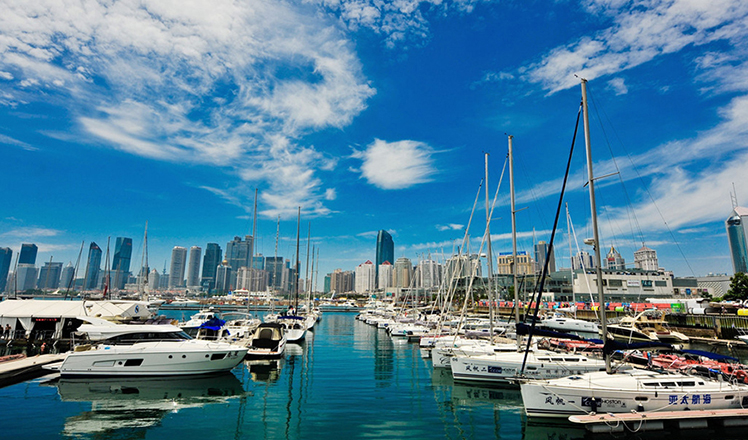History and law back China's sovereignty
Updated: 2016-07-14 07:51
(China Daily)
|
||||||||
75. In June 1975, China and the Philippines normalized their relations, and in the joint communiqué for that purpose, the two governments agreed to settle all disputes by peaceful means without resorting to the threat or use of force.
76. In fact, China's initiative of "pursuing joint development while shelving disputes" regarding the South China Sea issue was first addressed to the Philippines. In a June 1986 meeting with Philippine Vice President Salvador Laurel, Chinese leader Deng Xiaoping pointed out that Nansha Qundao belongs to China, and when referring to the matter of differences, stated that, "This issue can be shelved for now. Several years later, we can sit down and work out a solution that is acceptable to all in a calm manner. We shall not let this issue stand in the way of our friendly relations with the Philippines and with other countries." In April 1988, when meeting with Philippine President Corazón Aquino, Deng Xiaoping reiterated that "with regard to the issue concerning Nansha Qundao, China has the biggest say. Nansha Qundao has been part of China's territory throughout history, and no one has ever expressed objection to this for quite some time"; and "For the sake of the friendship between our two countries, we can shelve the issue for now and pursue joint development". Since then, when handling the relevant South China Sea issue and developing bilateral ties with other littoral countries around the South China Sea, China has all along acted in keeping with Deng Xiaoping's idea: "sovereignty belongs to China, disputes can be shelved, and we can pursue joint development".
77. Since the 1980s, China has put forward a series of proposals and initiatives for managing and settling through negotiation disputes with the Philippines in the South China Sea and reiterated repeatedly its sovereignty over Nansha Qundao, its position on peacefully settling the relevant disputes and its initiative of "pursuing joint development while shelving disputes". China has expressed its clear opposition to intervention by outside forces and attempts to multilateralize the South China Sea issue and emphasized that the relevant disputes should not affect bilateral relations.
78. In July 1992, the 25th ASEAN Foreign Ministers Meeting held in Manila adopted the ASEAN Declaration on the South China Sea. China expressed appreciation for relevant principles outlined in that Declaration. China stated that it has all along stood for peacefully settling through negotiation the territorial issues relating to part of Nansha Qundao and opposed the use of force, and is ready to enter into negotiation with countries concerned on implementing the principle of "pursuing joint development while shelving disputes" when conditions are ripe.
79. In August 1995, China and the Philippines issued the Joint Statement between the People's Republic of China and the Republic of the Philippines concerning Consultations on the South China Sea and on Other Areas of Cooperation in which they agreed that "disputes shall be settled by the countries directly concerned" and that "a gradual and progressive process of cooperation shall be adopted with a view to eventually negotiating a settlement of the bilateral disputes." Subsequently, China and the Philippines reaffirmed their consensus on settling the South China Sea issue through bilateral negotiation and consultation in a number of bilateral documents, such as the March 1999 Joint Statement of the China-Philippines Experts Group Meeting on Confidence-Building Measures and the May 2000 Joint Statement between the Government of the People's Republic of China and the Government of the Republic of the Philippines on the Framework of Bilateral Cooperation in the Twenty-First Century.
80. In November 2002, China and the ten ASEAN Member States signed the DOC in which the parties solemnly "undertake to resolve their territorial and jurisdictional disputes by peaceful means, without resorting to the threat or use of force, through friendly consultations and negotiations by sovereign states directly concerned, in accordance with universally recognized principles of international law, including the 1982 UN Convention on the Law of the Sea".
81. Afterwards, China and the Philippines reaffirmed this solemn commitment they had made in the DOC in a number of bilateral documents, such as the September 2004 Joint Press Statement between the Government of the People's Republic of China and the Government of the Republic of the Philippines and the September 2011 Joint Statement between the People's Republic of China and the Republic of the Philippines.
82. The relevant provisions in all the aforementioned bilateral instruments and the DOC embody the following consensus and commitment between China and the Philippines on settling the relevant disputes in the South China Sea: first, the relevant disputes shall be settled between sovereign states directly concerned; second, the relevant disputes shall be peacefully settled through negotiation and consultation on the basis of equality and mutual respect; and third, sovereign states directly concerned shall "eventually negotiate a settlement of the bilateral disputes" in accordance with universally recognized principles of international law, including the 1982 UNCLOS.
83. By repeatedly reaffirming negotiations as the means for settling relevant disputes, and by repeatedly emphasizing that negotiations be conducted by sovereign states directly concerned, the above-mentioned provisions obviously have produced the effect of excluding any means of third party settlement. In particular, the 1995 Joint Statement provides for "eventually negotiating a settlement of the bilateral disputes". The term "eventually" in this context clearly serves to emphasize that "negotiations" is the only means the parties have chosen for dispute settlement, to the exclusion of any other means including third party settlement procedures. The above consensus and commitment constitutes an agreement between the two states excluding third-party dispute settlement as a way to settle relevant disputes in the South China Sea between China and the Philippines. This agreement must be observed.
ii. It is the consensus of China and the Philippines to properly manage relevant disputes in the South China Sea
84. It is China's consistent position that, the relevant parties should establish and improve rules and mechanisms, and pursue practical cooperation and joint development, so as to manage disputes in the South China Sea, and to foster a good atmosphere for their final resolution.
85. Since the 1990s, China and the Philippines have reached the following consensus on managing their disputes: first, they will exercise restraint in handling relevant disputes and refrain from taking actions that may lead to an escalation; second, they will stay committed to managing disputes through bilateral consultation mechanisms; third, they commit themselves to pursuing practical maritime cooperation and joint development; and fourth, the relevant disputes should not affect the healthy growth of bilateral relations and peace and stability in the South China Sea region.
86. In the DOC, China and the Philippines also reached the following consensus: to exercise self-restraint in the conduct of activities that would complicate or escalate disputes and affect peace and stability; to intensify efforts, pending the peaceful settlement of territorial and jurisdictional disputes, to seek ways, in the spirit of cooperation and understanding, to build trust and confidence; and to explore or undertake cooperative activities including marine environmental protection, marine scientific research, safety of navigation and communication at sea, search and rescue operation and combating transnational crime.
87. China and the Philippines have made some progress in managing their differences and conducting practical maritime cooperation.
88. During the first China-Philippines Experts Group Meeting on Confidence-Building Measures held in March 1999, the two sides issued a joint statement, pointing out that, "the two sides agreed that the dispute should be peacefully settled through consultation in accordance with the generally-accepted principles of international law including the United Nations Convention on the Law of the Sea, [... and to] exercise self-restraint and not to take actions that might escalate the situation."
89. In the Joint Press Statement of the Third China-Philippines Experts Group Meeting on Confidence-Building Measures released in April 2001, it is stated that, "the two sides noted that the bilateral consultation mechanism to explore ways of cooperation in the South China Sea has been effective. The series of understanding and consensus reached by the two sides have played a constructive role in the maintenance of the sound development of China-Philippines relations and peace and stability of the South China Sea area."
90. In September 2004, in the presence of the leaders of China and the Philippines, China National Offshore Oil Corporation (CNOOC) and Philippine National Oil Company (PNOC) signed the Agreement for Joint Marine Seismic Undertaking in Certain Areas in the South China Sea. In March 2005, national oil companies from China, the Philippines and Vietnam signed, with the consent of both China and the Philippines, the Tripartite Agreement for Joint Marine Seismic Undertaking in the Agreement Area in the South China Sea. It was agreed that during an agreement term of three yearperiod, these oil companies should collect and process certain amount of 2D and/or 3D seismic lines in the agreement area covering about 143,000 square kilometers, re-process certain amount of existing 2D seismic lines, and study and assess the oil resources in the area. The 2007 Joint Statement of the People's Republic of China and the Republic of the Philippines states that, "both sides agree that the tripartite joint marine seismic undertaking in the South China Sea serves as a model for cooperation in the region. They agreed that possible next steps for cooperation among the three parties should be explored to bring collaboration to a higher level and increase the momentum of trust and confidence in the region."
91. Regrettably, due to the lack of willingness for cooperation from the Philippine side, the China-Philippines Experts Group Meeting on Confidence-Building Measures has stalled, and the China-Philippines-Vietnam tripartite marine seismic undertaking has failed to move forward.
IV. The Philippines Has Repeatedly Taken Moves that Complicate the Relevant Disputes
92. Since the 1980s, the Philippines has repeatedly taken moves that complicate the relevant disputes.
i. The Philippines attempts to entrench its illegal occupation of some islands and reefs of China's Nansha Qundao
93. In China's Nansha Qundao, the Philippines started in the 1980s to build military facilities on some islands and reefs it has invaded and illegally occupied. In the 1990s, the Philippines continued to build airfields and naval and air force facilities on these illegally-occupied islands and reefs; centered on Zhongye Dao, the construction has extended to other islands and reefs, with runways, military barracks, docks and other facilities built and renovated, so as to accommodate heavy transport planes, fighter jets and more and larger vessels. Furthermore, the Philippines made deliberate provocations by frequently sending its military vessels and aircraft to intrude into Wufang Jiao, Xian'e Jiao, Xinyi Jiao, Banyue Jiao and Ren'ai Jiao of China's Nansha Qundao, and destroyed survey markers set up by China.
94. Still worse, on 9 May 1999, the Philippines sent BRP Sierra Madre (LT-57), a military vessel, to intrude into China's Ren'ai Jiao and illegally ran it aground on the pretext of "technical difficulties". China immediately made solemn representations to the Philippines, demanding the immediate removal of that vessel. But the Philippines claimed that the vessel could not be towed away for "lack of parts".
95. Over this matter, China has repeatedly made representations to the Philippines and renewed the same demand. For instance, in November 1999, the Chinese Ambassador to the Philippines met with Secretary of Foreign Affairs Domingo Siazon and Chief of the Presidential Management Staff Leonora de Jesus to make another round of representations. Many times the Philippines promised to tow away the vessel, but it has taken no action.
96. In September 2003, upon the news that the Philippines was preparing to build facilities around that military vessel illegally run aground at Ren'ai Jiao, China lodged immediate representations. The Philippine Acting Secretary of Foreign Affairs Franklin Ebdalin responded that the Philippines had no intention to construct facilities on Ren'ai Jiao and that, as a signatory to the DOC, the Philippines had no desire to and would not be the first to violate the Declaration.
97. But the Philippines did not fulfill its undertaking to tow away that vessel. Instead, it made even worse provocations. In February 2013, cables were lined up around that grounded vessel and people on board bustled around, making preparations for the construction of permanent facilities. In response to China's repeated representations, the Philippine Secretary of National Defense Voltaire Gazmin claimed that the Philippines was simply resupplying and repairing the vessel, and promised that no facilities would be built on Ren'ai Jiao.
98. On 14 March 2014, the Philippine Department of Foreign Affairs issued a statement openly declaring that the vessel it ran aground at Ren'ai Jiao was placed there as a permanent Philippine government installation. This was an apparent attempt to provide an excuse for its continued refusal to fulfill its undertaking to tow away that vessel in order to illegally seize Ren'ai Jiao. China immediately responded that it was shocked by this statement and reiterated that it would never allow the Philippines to seize Ren'ai Jiao by any means.
99. In July 2015, the Philippines stated publicly that the so-called maintenance repair was being done to fortify the vessel.
100. To sum up, by running aground its military vessel at Ren'ai Jiao, then promising repeatedly to tow it away but breaking that promise repeatedly and even fortifying it, the Philippines has proven itself to be the first to openly violate the DOC.
101. Over the years, the Philippines has invaded and illegally occupied some islands and reefs of China's Nansha Qundao and constructed various military facilities thereupon in an attempt to establish a fait accompli of permanent occupation. These moves have grossly violated China's sovereignty over the relevant islands and reefs of Nansha Qundao and violated the Charter of the United Nations and basic norms of international law.
ii. The Philippines has increasingly intensified its infringement of China's maritime rights and interests
102. Since the 1970s, the Philippines, asserting its unilateral claims, has intruded into, among others, the maritime areas of Liyue Tan and Zhongxiao Tan of China's Nansha Qundao to carry out illegal oil and gas exploratory drilling, including listing the relevant blocks for bidding.
103. Since 2000, the Philippines has expanded the areas for bidding, intruding into larger sea areas of China's Nansha Qundao. A large span of sea areas of China's Nansha Qundao was designated as bidding blocks by the Philippines in 2003. During the fifth "Philippine Energy Contracting Round" launched in May 2014, four of the bidding blocks on offer reached into relevant sea areas of China's Nansha Qundao.
104. The Philippines has repeatedly intruded into relevant waters of China's Nansha Qundao, harassing and attacking Chinese fishermen and fishing boats conducting routine fishing operations. Currently available statistics show that from 1989 to 2015, 97 incidents occurred in which the Philippines infringed upon the safety, life and property of Chinese fishermen: 8 involving shooting, 34 assault and robbery, 40 capture and detention, and 15 chasing. These incidents brought adverse consequences to close to 200 Chinese fishing vessels and over 1,000 Chinese fishermen. In addition, the Philippines treated Chinese fishermen in a violent, cruel and inhumane manner.
105. Philippine armed personnel often use excessive force against Chinese fishermen in utter disregard of the safety of their lives. For example, on 27 April 2006, one armed Philippine fishing vessel intruded into Nanfang Qiantan of China's Nansha Qundao and attacked Chinese fishing boat Qiongqionghai 03012. One Philippine armed motor boat carrying four gunmen approached that Chinese fishing boat. Immediately these gunmen fired several rounds of bullets at the driving panel, killing Chen Yichao and three other Chinese fishermen on the spot, severely wounding two others and causing minor injuries to another. Subsequently a total of 13 gunmen forced their way onboard the Chinese fishing boat and seized satellite navigation and communication equipment, fishing equipment and harvests and other items.
- Arbitration body 'has nothing to do' with us, says UN
- Trump expected to make VP announcement on Friday
- 25 killed, 50 injured as trains collide in Italy
- The South China Sea Arbitration: Illegal, Illegitimate and Invalid
- Theresa May set to be UK's next Prime Minister after rival stands down
- Killing of UN Chinese peacekeepers slamed

 Coming-of-Age Day on the frontline of fighting floods
Coming-of-Age Day on the frontline of fighting floods
 Monks seek tranquility inside lotus ponds
Monks seek tranquility inside lotus ponds
 In pics: Top 10 livable Chinese cities
In pics: Top 10 livable Chinese cities
 Restaurant of 'bandits' opens in Northeast China's Jilin
Restaurant of 'bandits' opens in Northeast China's Jilin
 Ivanovic, Schweinsteiger holds wedding in Venice
Ivanovic, Schweinsteiger holds wedding in Venice
 Tim Duncan announces retirement after 19 seasons with Spurs
Tim Duncan announces retirement after 19 seasons with Spurs
 Merchandize for Rio 2016 a hit in run-up to games
Merchandize for Rio 2016 a hit in run-up to games
 Top 10 best Chinese cities to own a house
Top 10 best Chinese cities to own a house
Most Viewed
Editor's Picks

|

|

|

|

|

|
Today's Top News
Ministry slams US-Korean THAAD deployment
Two police officers shot at protest in Dallas
Abe's blame game reveals his policies failing to get results
Ending wildlife trafficking must be policy priority in Asia
Effects of supply-side reform take time to be seen
Chinese State Councilor Yang Jiechi to meet Kerry
Chinese stocks surge on back of MSCI rumors
Liang avoids jail in shooting death
US Weekly

|

|







